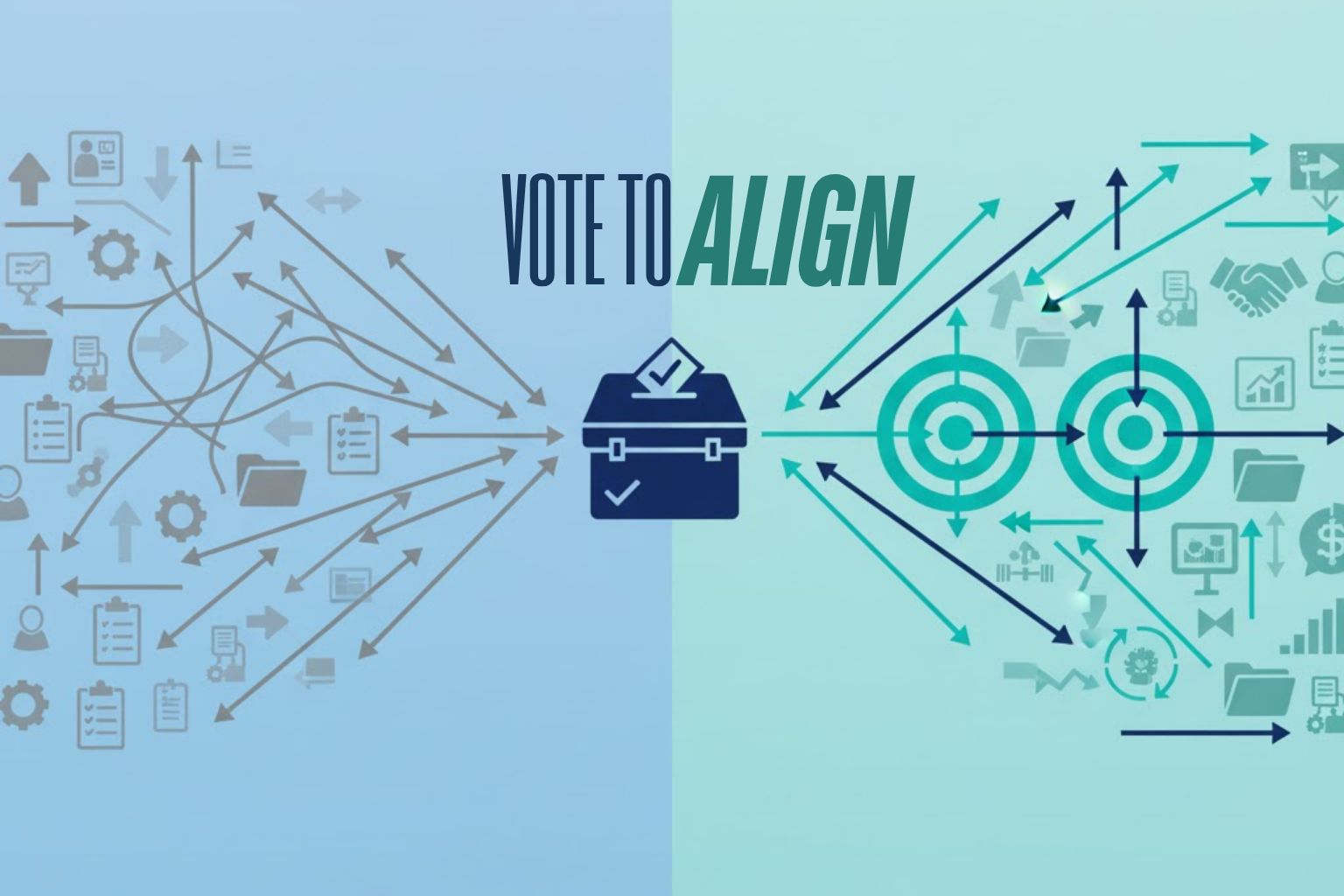- AI-First Business by Jeff Sauer
- Posts
- The two biggest priorities? We weren't working on them.
The two biggest priorities? We weren't working on them.

15 priorities, 1 vote. The results surprised everyone.
We just discovered we've been working on the wrong things for months.
Here's how we figured it out.
During our latest quarterly planning session, I tried something different. Instead of letting everyone just announce what they wanted to work on (which usually turns into a collection of pet projects), we started with a brain dump.
Everyone wrote down everything they thought was important. Frustrations. Opportunities. Things we needed to address. No filtering, no judgment.
We ended up with about 15 items after consolidation.
Then came the interesting part: we voted.
Everyone ranked all 15 priorities from most to least important. We added up the scores to see what rose to the top.
The Surprise
The two highest-priority items - the ones that got the most votes from our team - were things we hadn't been working on at all.
We'd spent zero time talking about them in recent weeks. They weren't on anyone's active project list.
Meanwhile, the stuff we'd been grinding on? Ranked much lower in importance.
How does that happen?
Emotion vs. Data
Most businesses (including ours, apparently) operate on emotion rather than data when it comes to priorities.
We work on what makes us feel busy. What's urgent. What's been nagging at us personally.
But what feels important to you individually might not be what's actually important to the business.
The voting process forced us to step back and think objectively about impact rather than just urgency or personal preference.
The Democratic Advantage
Here's why the voting approach worked better than just asking for opinions:
People don't usually want to tell you directly that your priorities are wrong. It feels confrontational.
But when everyone votes anonymously and the data speaks for itself? That gives everyone permission to acknowledge what actually matters most.
It removes the personal dynamics and makes the decision feel collaborative rather than critical.
The Shift
This completely changed what we're working on this quarter.
Those reflection weeks I've written about? The system cleanup project? The strategic pauses to think about direction?
All of those came out of this planning process. They were the high-priority items we'd been ignoring while staying busy with lower-impact work.
Sometimes when it comes to planning, you need to let other people tell you how you should prioritize rather than planning in isolation.
The best system is the one you actually use and improve upon. But first, you need to make sure you're using it to work on the right things.
Your Turn
If you're doing quarterly planning (or any kind of strategic planning), try the voting approach:
Brain dump everything that seems important
Have everyone rank the full list
Add up the scores
Compare the results to what you're actually working on
You might be surprised by the disconnect.
I was.
To Your AI-First Success,
Jeff Sauer
Make Every Platform Work for Your Ads
Marketers waste millions on bad creatives.
You don’t have to.
Neurons AI predicts effectiveness in seconds.
Not days. Not weeks.
Test for recall, attention, impact, and more; before a dollar gets spent.
Brands like Google, Facebook, and Coca-Cola already trust it. Neurons clients saw results like +73% CTR, 2x CVR, and +20% brand awareness.

